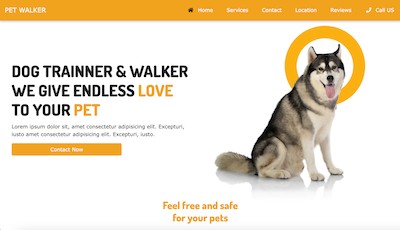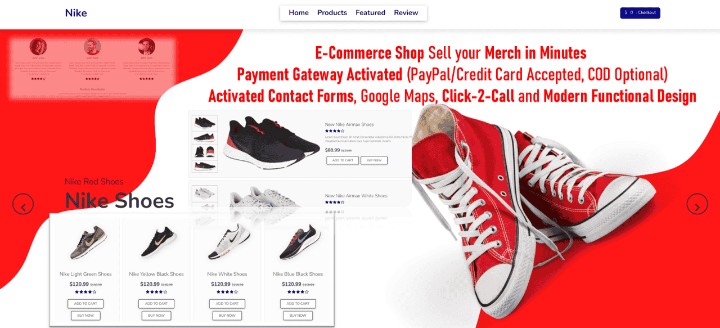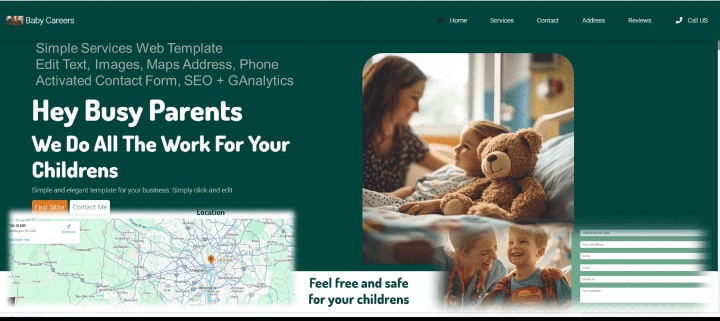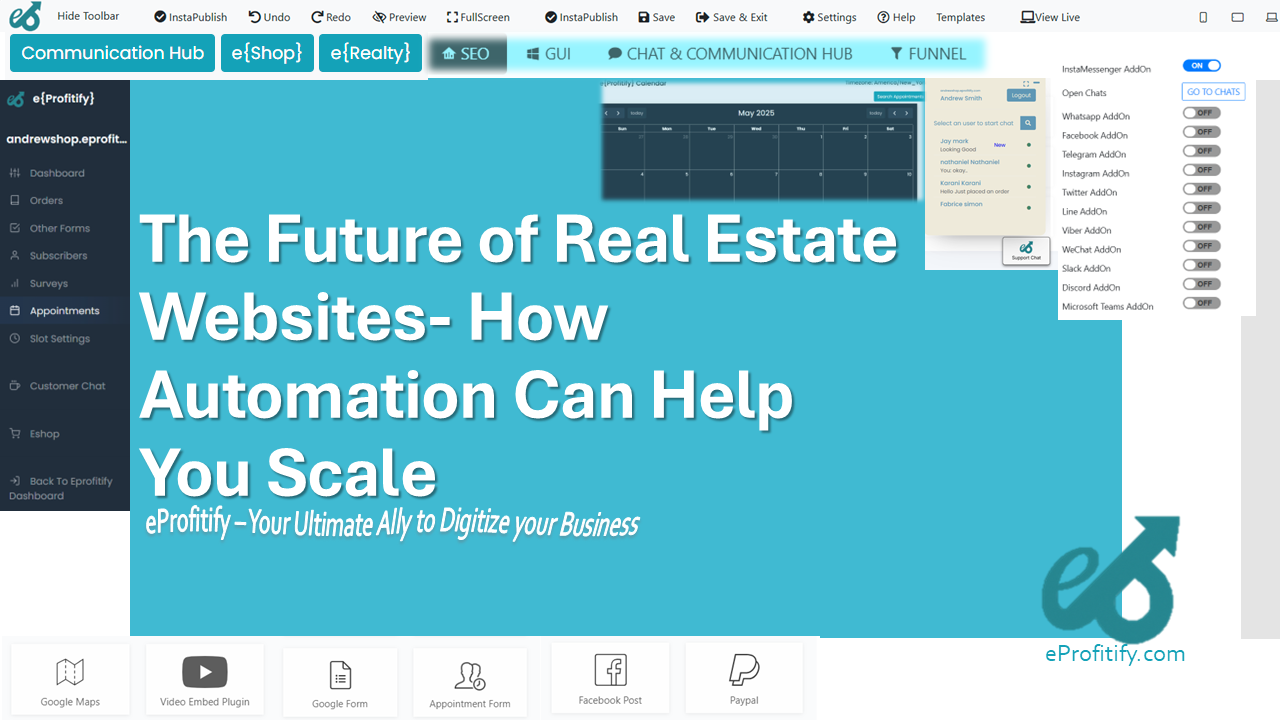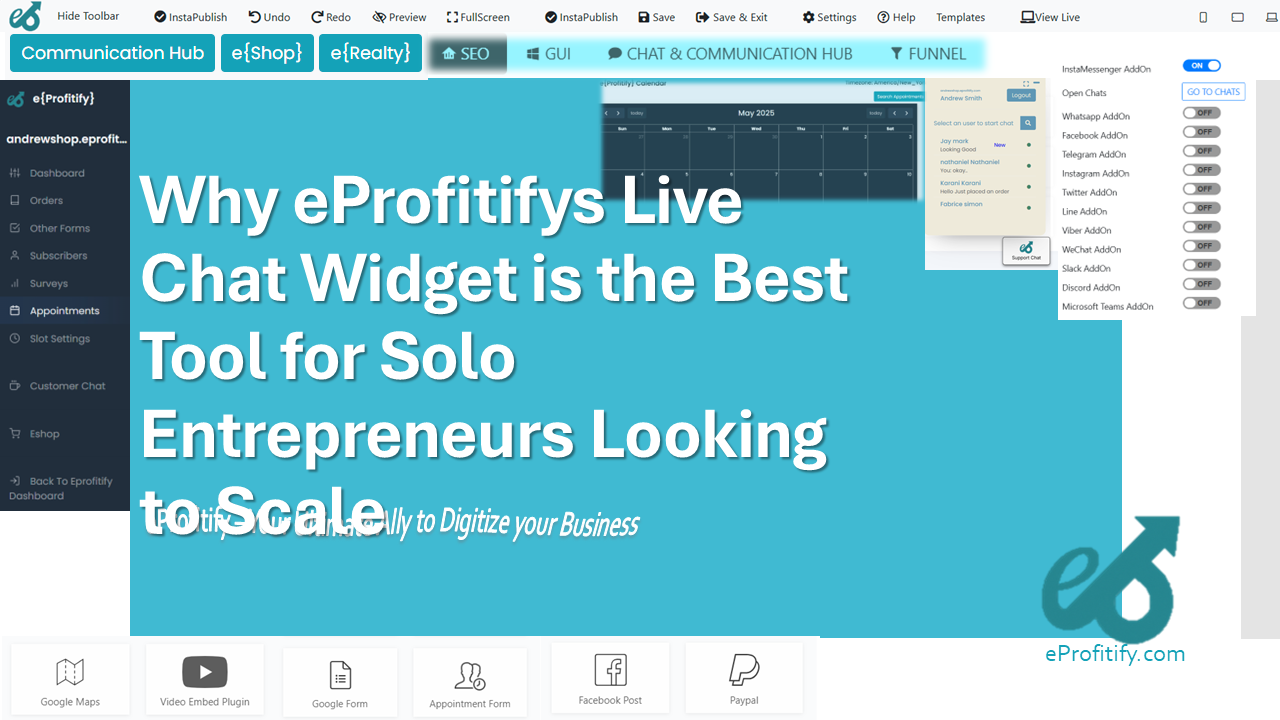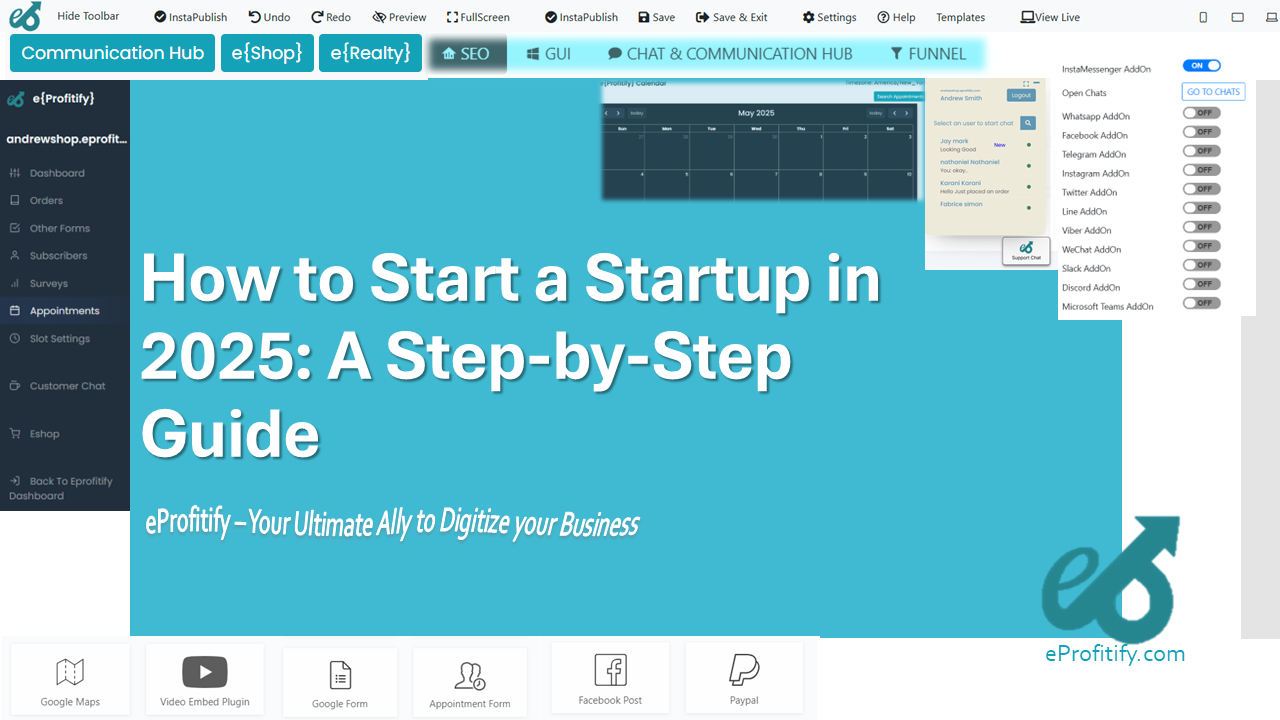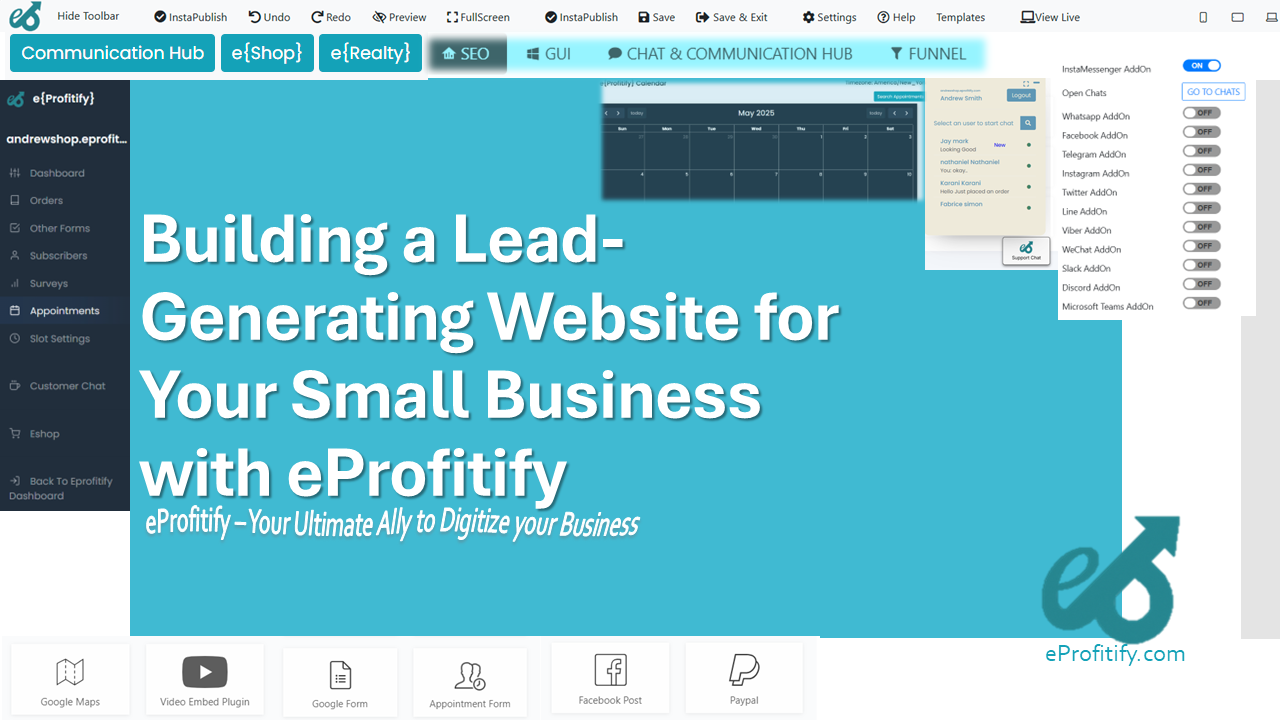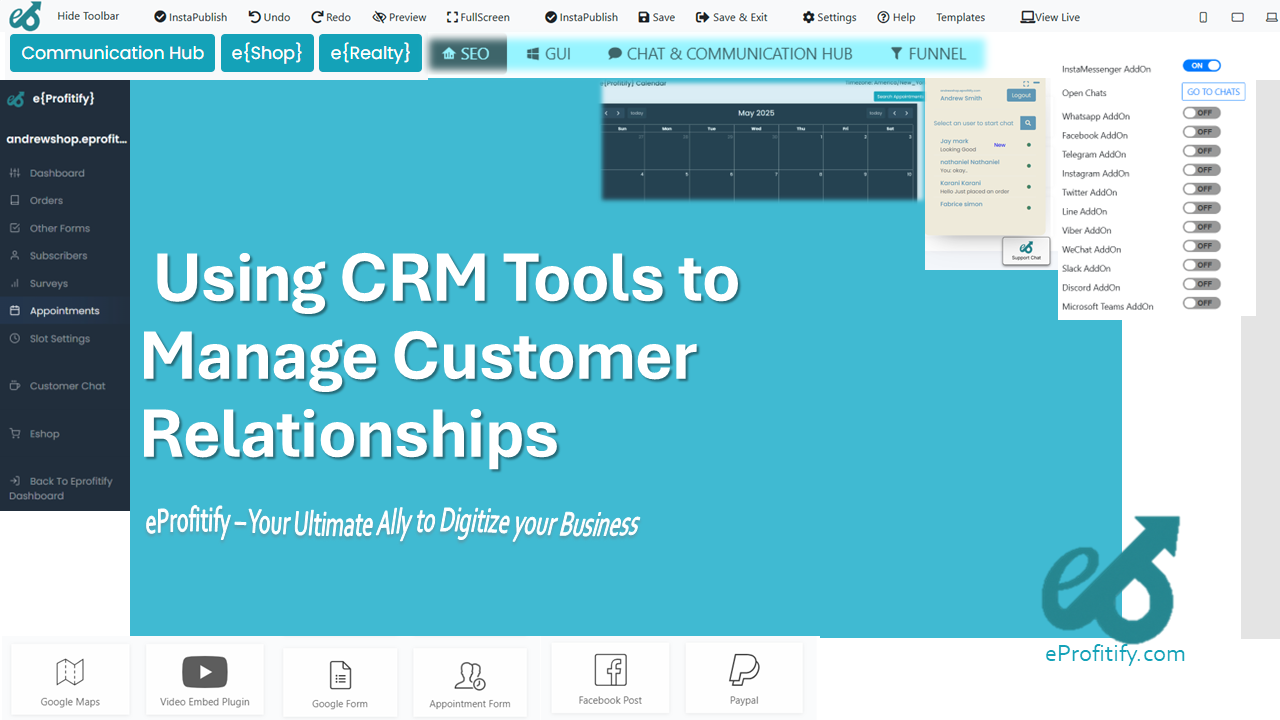How to Use Analytics Tools to Optimize Website Performance
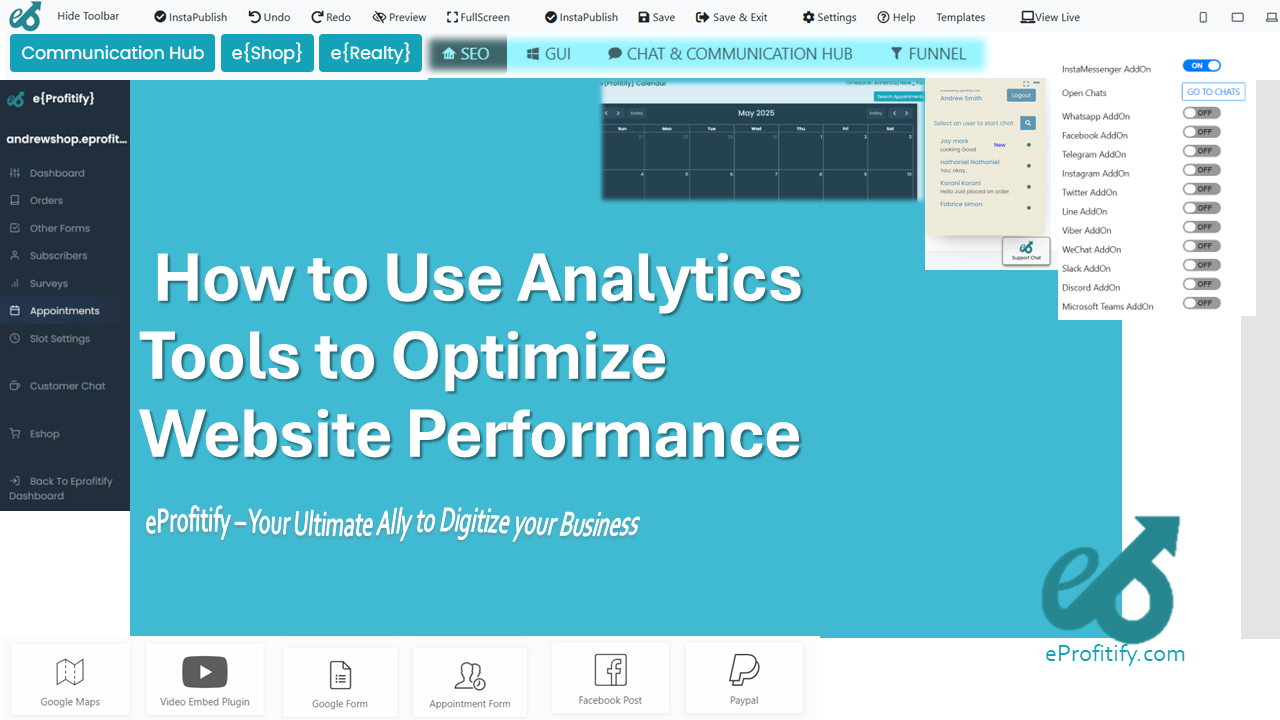
How to Use Analytics Tools to Optimize Website Performance
In today’s digital-first landscape, website performance is a cornerstone of business success. A slow or poorly optimized site can drive visitors away, damage brand reputation, and reduce revenue. According to Google, 40% of users abandon a website if it takes more than three seconds to load, while mobile users—who account for over 55% of global web traffic—are even less patient. To stay competitive, businesses must leverage analytics tools to diagnose issues, refine strategies, and deliver seamless user experiences. Platforms like eProfitify, a leading website publishing and management tool, further amplify these efforts by integrating analytics with features like instant messaging, CRM, and ecommerce. Here’s how to optimize your website using data-driven insights while harnessing the power of comprehensive tools like eProfitify.
1. Set Clear Objectives Using Analytics
Begin by defining measurable goals. Whether it’s improving conversion rates, reducing bounce rates, or boosting page views, analytics tools like Google Analytics or Hotjar help track progress. For example, if your goal is to increase newsletter sign-ups by 20%, analytics can reveal which pages drive the most subscriptions and where users drop off.
Statistic Alert: Websites with clearly defined goals are 50% more likely to exceed revenue expectations (Forrester).
2. Track User Behavior to Identify Pain Points
Understanding how visitors interact with your site is critical. Tools like heatmaps (e.g., Crazy Egg) and session recordings highlight where users click, scroll, or hesitate. If analytics show high exit rates on a checkout page, it may indicate usability issues.
Statistic Alert: Pages with poor UX design see up to 70% higher bounce rates (尼尔森 Norman Group).
eProfitify Integration: Pair behavioral analytics with eProfitify’s instant messaging tool to address user frustrations in real time. For instance, if a visitor lingers on a pricing page, proactive chat support can answer questions, reducing abandonment.
3. Analyze Traffic Sources for Targeted Marketing
Analytics tools break down traffic channels—organic search, social media, email—to show which campaigns drive engagement. If paid ads have low conversion rates despite high traffic, reallocating budget to organic SEO might yield better ROI.
Statistic Alert: Businesses using multi-channel attribution see 30% higher customer retention (HubSpot).
4. Monitor Page Speed and Technical Performance
Slow load times are detrimental. Tools like Google PageSpeed Insights or GTmetrix provide actionable recommendations, such as compressing images or enabling browser caching.
Statistic Alert: A 1-second delay in page load time can reduce conversions by 7% (Akamai).
eProfitify Advantage: The platform’s optimized hosting infrastructure ensures faster load times, while analytics integration lets you track improvements post-optimization.
5. A/B Testing to Refine User Experiences
A/B testing tools like Optimizely or VWO allow you to experiment with layouts, CTAs, or headlines. For example, testing two versions of a landing page might reveal that a green “Buy Now” button outperforms a red one by 15%.
Statistic Alert: A/B testing can boost ecommerce sales by 30–40% (Campaign Monitor).
eProfitify Synergy: Use eProfitify’s ecommerce tools to test product page designs and sync results with analytics for faster iterations.
6. Personalize Content Using Demographic Data
Analytics tools segment audiences by demographics, location, or behavior. Personalized product recommendations based on browsing history can increase engagement.
Statistic Alert: 74% of marketers report higher engagement with personalized content (SmarterHQ).
eProfitify’s CRM: The platform’s CRM tracks customer interactions, enabling tailored email campaigns or discounts based on purchase history.
7. Integrate Analytics with Other Tools
Centralizing data from analytics, CRM, and marketing tools creates a 360-degree view of performance. For instance, linking sales data with web traffic metrics highlights which campaigns drive revenue.
Statistic Alert: Companies using integrated CRM systems see 29% higher sales (Salesforce).
eProfitify’s Unified Platform: Beyond analytics, eProfitify offers appointment management systems to reduce no-shows by 25%, ecommerce integrations to streamline checkout processes (combatting the 70% average cart abandonment rate), and CRM tools to nurture customer relationships.
Why eProfitify Stands Out in Website Optimization
eProfitify isn’t just another website builder—it’s a holistic ecosystem designed to enhance performance at every touchpoint:
- Instant Messaging: Resolve queries in real time, improving satisfaction and reducing bounce rates.
- Appointment Management: Sync bookings with CRM data to personalize follow-ups and reduce scheduling conflicts.
- Ecommerce Tools: Track cart abandonment analytics and optimize checkout flows with one-click integrations.
- CRM Integration: Turn anonymous visitors into loyal customers by leveraging purchase history and interaction data.
By unifying these features with analytics, eProfitify empowers businesses to act on insights swiftly, whether it’s tweaking a landing page or launching a targeted promo.
Conclusion
Optimizing website performance is an ongoing process fueled by data. Analytics tools identify gaps, while platforms like eProfitify provide the infrastructure to address them efficiently. From speeding up load times to personalizing user journeys, the synergy between analytics and versatile tools can transform your digital presence. In an era where 53% of mobile users abandon slow sites, adopting a proactive, data-driven approach isn’t optional—it’s essential. With eProfitify’s robust suite of features, businesses can not only meet but exceed user expectations, driving growth and loyalty in a crowded online space.
By combining the power of analytics with a platform that does it all, you’re not just keeping up—you’re leading the way.
